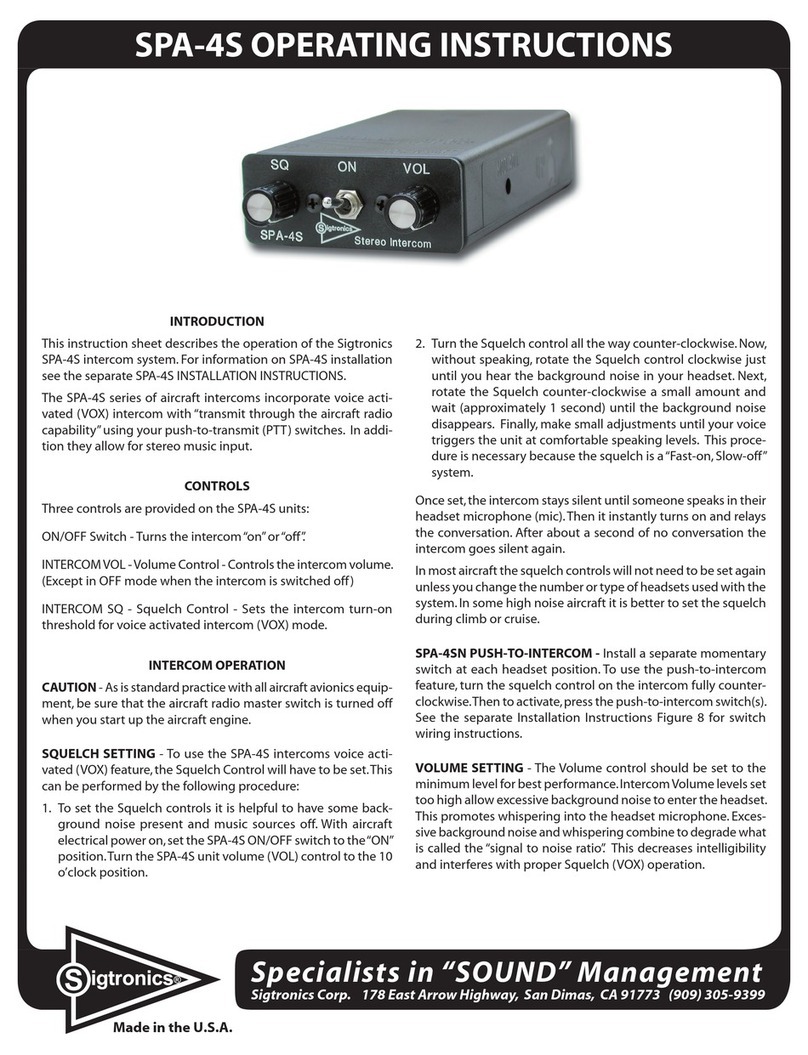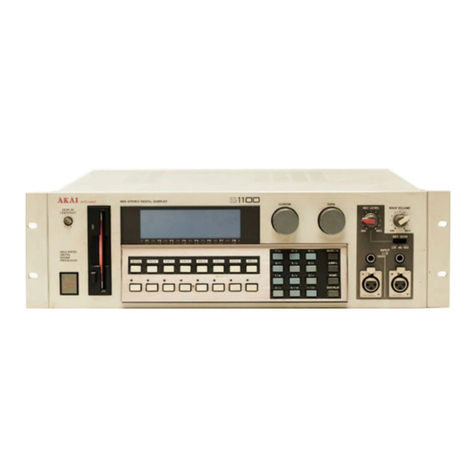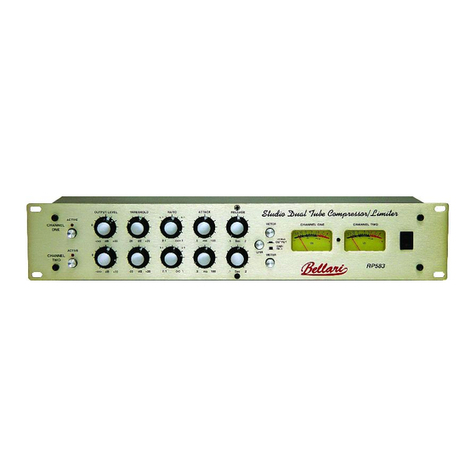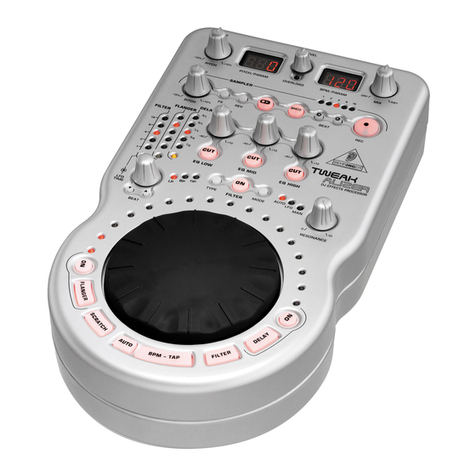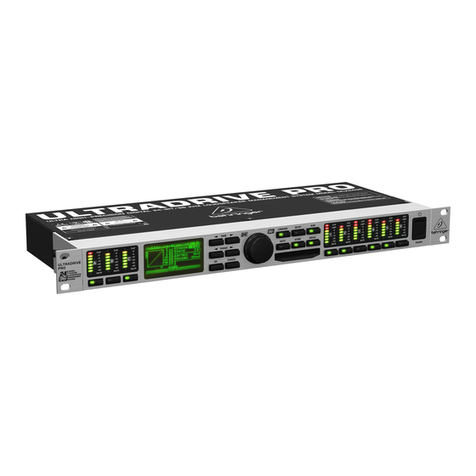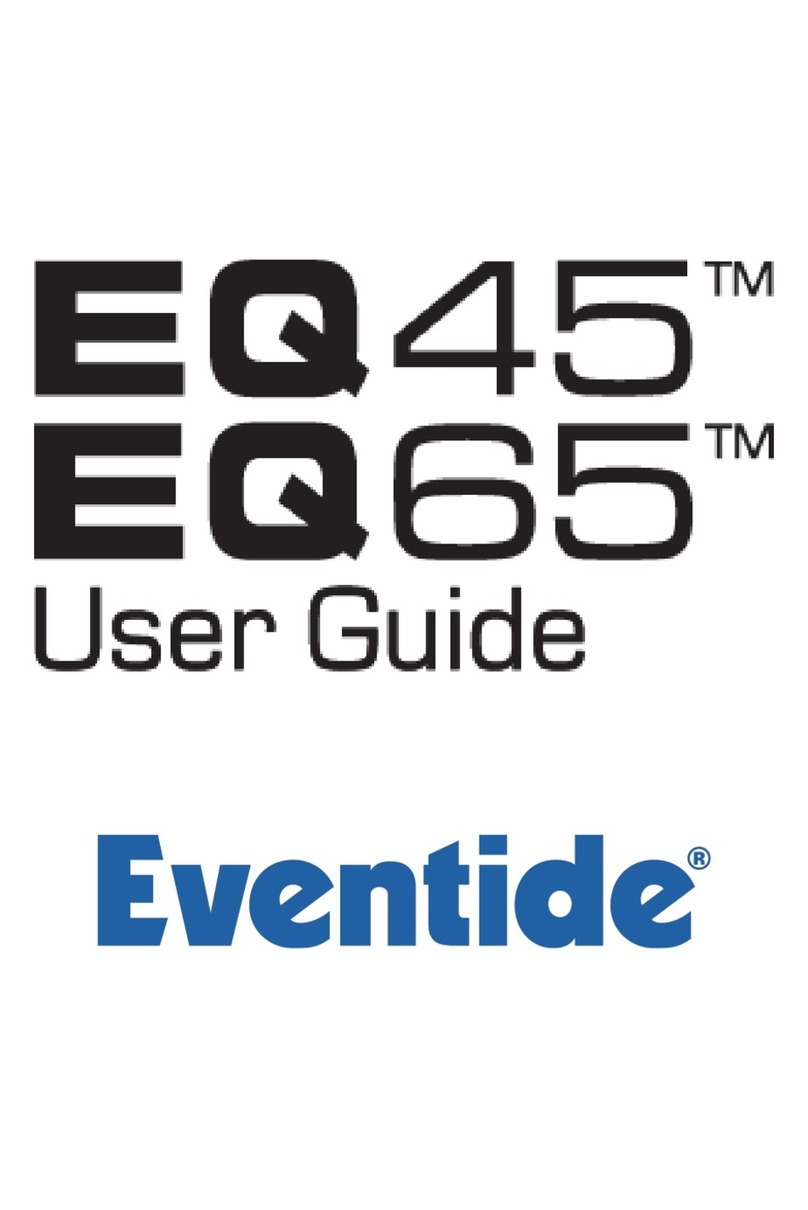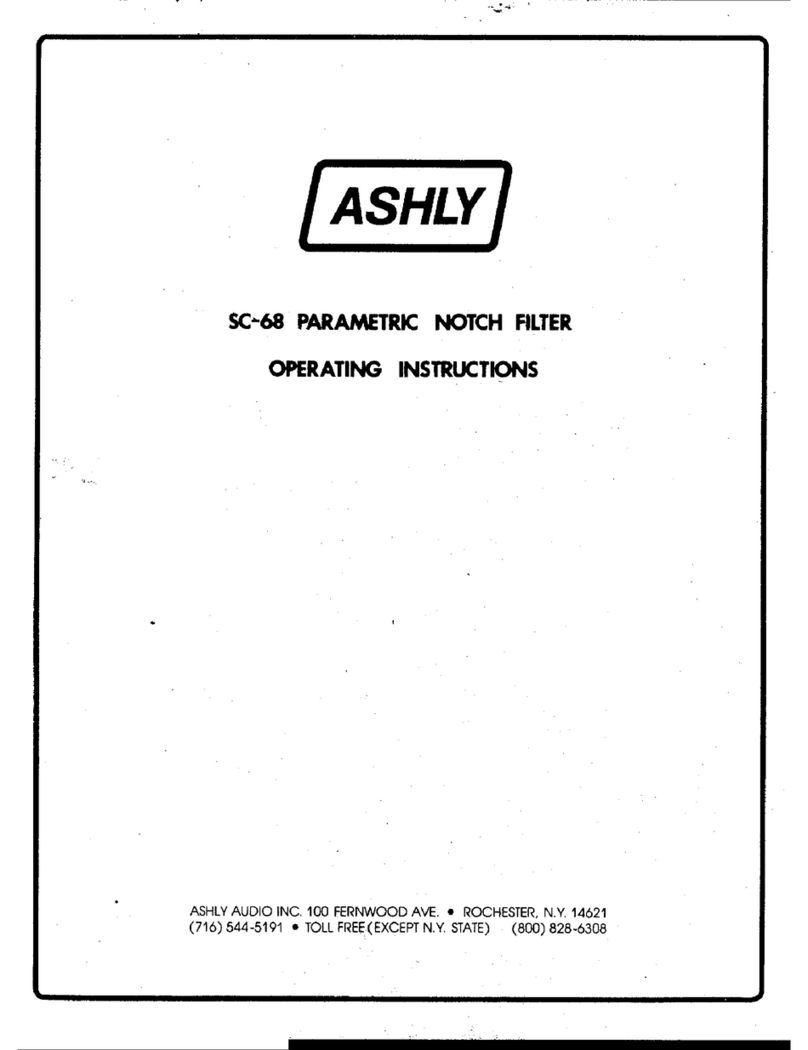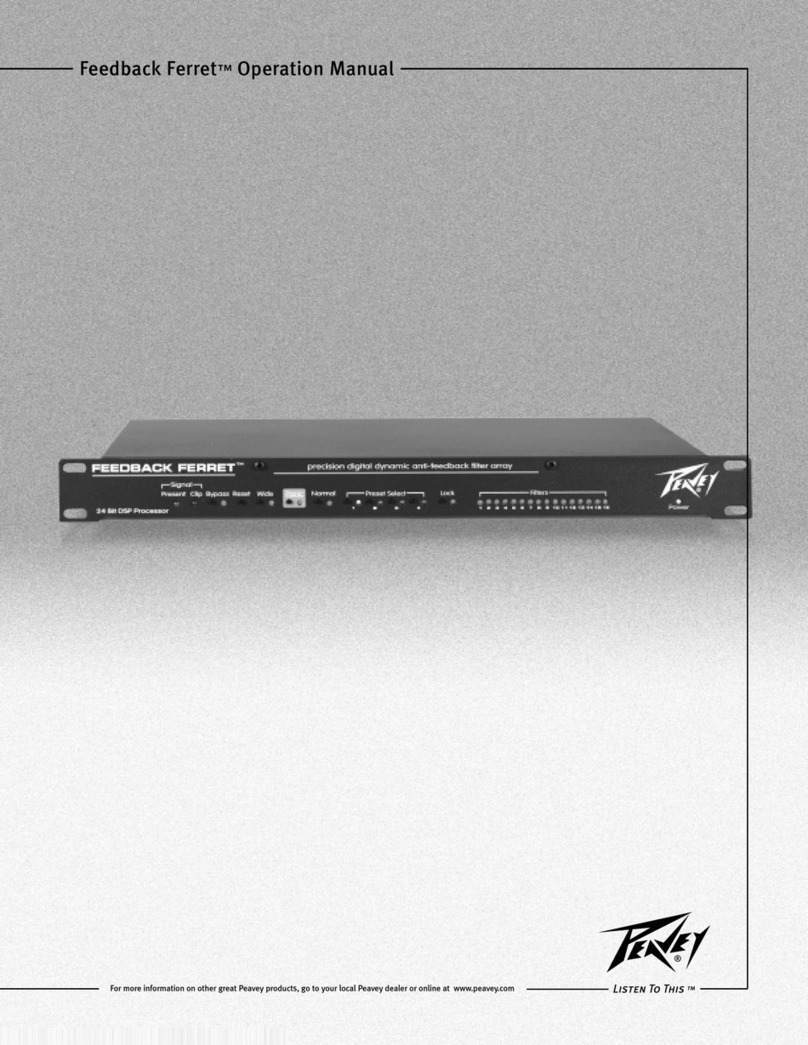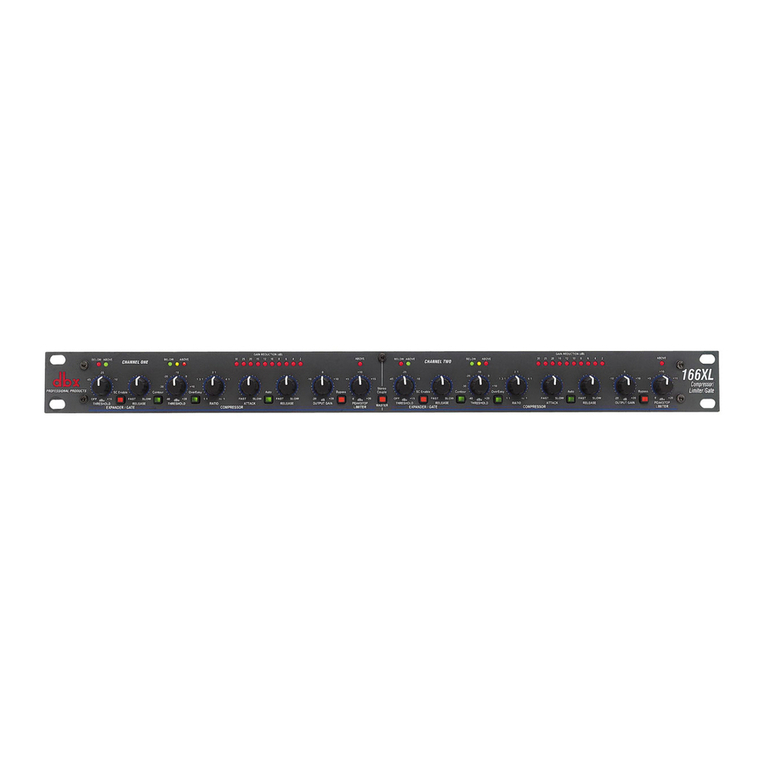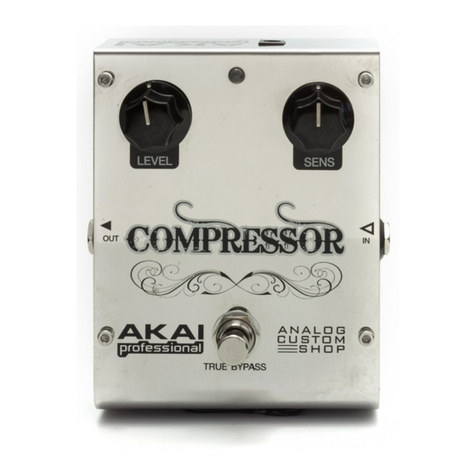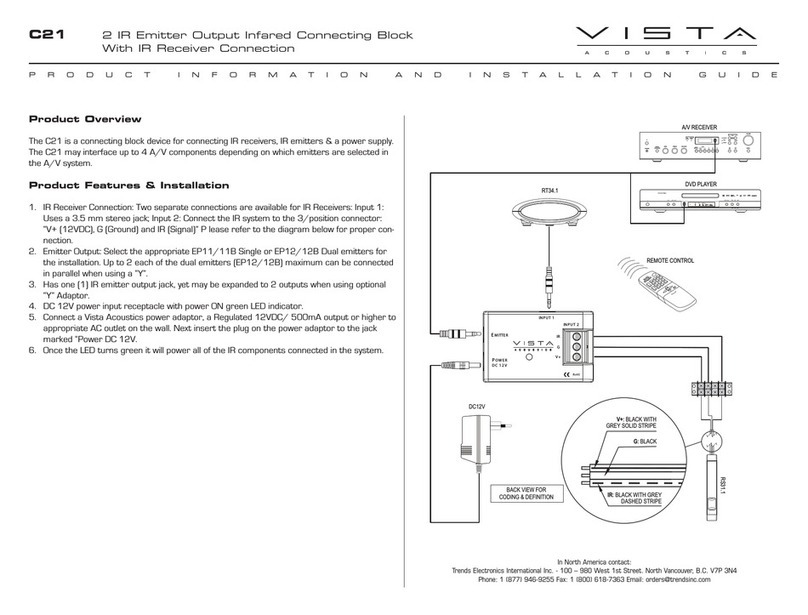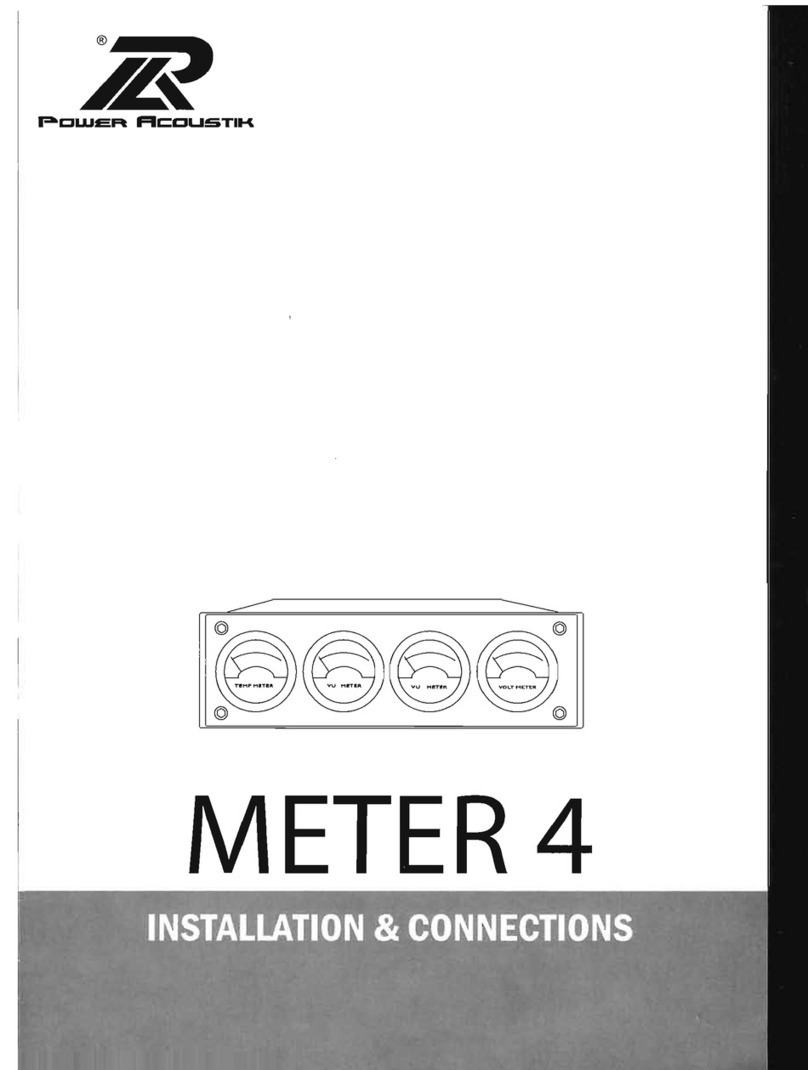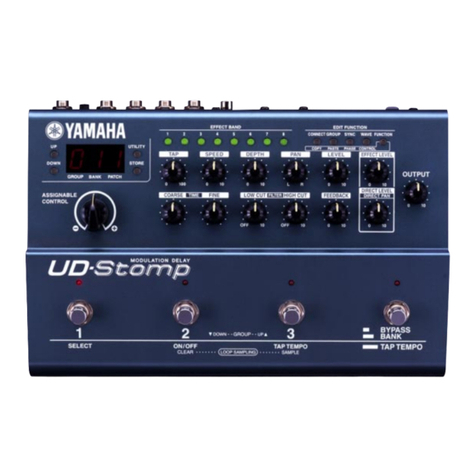Linear DMC1 User manual

PRINTER’S INSTRUCTIONS:
INSTR,INSTL,ROUGH-IN,DMC1 - LINEAR P/N: 228127 D - INK: BLACK - MATERIAL: 20 LB. MEAD BOND - SIZE: 8.500” X 11.000” - SCALE: 1-1 - FOLDING: ALBUM FOLD - BINDING: SADDLE STITCH
INTRODUCTION
Designed for installation in new homes, the DMC1 is a whole-house music and communication system. It is designed to
provide years of enjoyment and service to the homeowner. M&S Systems brand audio products are backed with more
than 50 years of experience in the design and manufacture of precision acoustical equipment for the home. To ensure
that the homeowner receives the high-quality music and voice reproduction that the system is designed to deliver, it is
important that each step of the installation be carefully completed by the installer. In the event you need troubleshooting
assistance, please call our technical support staff at 1-800-421-1587.
DMC1 MUSIC/COMMUNICATIONS SYSTEM
ROUGH-IN INSTRUCTIONS
Read Instructions - All the safety and operating
instructions should be read before installing or operating
the DMC1.
Retain Instructions - The safety and operating
instructions should be retained for future reference.
Heed Warnings - All warnings on the appliance and in the
operating instructions should be adhered to.
Follow Instructions - All operating and use instructions
should be followed.
Water and Moisture - The appliance should not be used
near water - for example: near bathtub, washbowl, kitchen
sink, laundry tub, in a wet basement, or near a swimming
pool, and the like. Doing so can create a fire or shock
hazards and impair the warranty.
Cleaning - Use only a dry cloth.
Attachments - Do not use attachments not recommended
by the product manufacturer as they may cause hazards.
Ventilation - The appliance should be situated so that
its location or position does not interfere with its proper
ventilation. For example, the appliance should not be
situated on a bed, sofa, rug, or similar surface that may
block the ventilation openings: or, placed in a built in
installation, such as a bookcase or cabinet that may
impede the flow of air to the ventilation openings.
Heat - The appliance should be situated away from heat
sources such as radiators, heat registers, stoves, or other
appliances (including amplifiers) that produce heat.
Power Sources - The appliance should be connected to
a power supply only of the type described in the rough-in
instructions or as marked on the appliance.
Grounding or Polarization - Precautions should be
taken so that the grounding or polarization means of an
appliance is not defeated.
Power Lines - An outdoor antenna should be located
away from power lines.
Outdoor Antenna Grounding - If an outside antenna
is connected to the receiver, be sure the antenna system
is grounded so as to provide some protection against
voltage surges and built up static charges. Section 810
of the National Electrical Code, ANSI/NFPA No. 70 1984,
provides information with respect to proper grounding of
the mast and supporting structure, grounding of the lead
in wire to an antenna discharge unit, size of grounding
conductors, location of antenna discharge unit, connection
to grounding electrodes, and requirements for the
grounding electrode (see figure).
Object and Liquid Entry - Never push objects of any
kind into this product through openings as they may touch
dangerous voltage points or short out parts that could
result in a fire or electric shock. Never spill liquid of any
kind on the product.
Servicing - The user should not attempt to service
the appliance beyond that described in the operating
instructions. All other servicing should be referred to
qualified service personnel.
Damage Requiring Service - The appliance should be
serviced by qualified service personnel when:
■The power supply cord or the plug has been
damaged; or
■Objects have fallen, or liquid has been spilled
into the appliance; or
■The appliance has been exposed to rain; or the
appliance does not appear to operate normally
or exhibits a marked change in performance; or
■The appliance has been dropped, or the
enclosure damaged.
■When the product exhibits a distinct change in
performance - this indicates a need for service.
Replacement Parts - When replacement parts are
required, be sure the service technician has used
replacement parts specified by the manufacturer or have
the same characteristics as the original part. Unauthorized
substitutions may result in fire, electric shock, or other
hazards.
Safety Check - Upon completion of any service or repairs
to this product, ask the service technician to perform safety
checks to determine that the product is in proper operating
condition.
Wall or Ceiling Mounting - The product should be
mounted to a wall or ceiling only as recommended by the
manufacturer.
IMPORTANT SAFETY INSTRUCTIONS
USA & Canada (800) 421-1587 & (800) 392-0123
(760) 438-7000 - Toll Free FAX (800) 468-1340
www.linearcorp.com
SHOCK HAZARD !
The lightning flash with arrowhead symbol within an
equilateral triangle is intended to alert the user to the
presence of un-insulated “dangerous voltage” within the
product’s enclosure that may be of sufficient magnitude to
constitute a risk of electric shock to persons.
CAUTION !
The exclamation point within an equilateral triangle is
intended to alert the user to the presence of important
operating and maintenance (servicing) instructions in the
literature accompanying the product.

✔DO ensure that all instructions have been followed before power is applied to
system. The installation shall be carried out in accordance with all applicable
installation rules.
✔DO use only M&S systems brand cable (except for Cat-5 & RG-6) as called
out in these instructions. The cable is designed and constructed with electrical
specifications necessary for proper audio performance.
✔DO use only a dry cloth to clean the exterior plastics on the DMC1 Master Station
and Room Stations. DO NOT use liquid or aerosols.
✔DO make gradual bends of the cable where necessary -- no sharper than 1” radius.
✔DO dress the cables neatly with cable ties or Velcro™ wraps. Use loose or
moderate pressure.
✔DO use cable-pulling lubricant only for cable runs that may otherwise require great
force to install. When cable lubricant is used, read the instructions to be sure it is
compatible with the cable jacket material (PVC or FEP).
✔DO avoid stressing cable conductors, limit pulling tension to 25 pounds or less
as specified by EIA/TIA-568A standard. Pull cables gradually and with constant
tension, taking care not to crush or pinch bundles.
✔DO use grommets to protect the cable where passing through metal studs or
anything that can possibly damage them.
✔DO test every installed cable run with a cable tester. “Toning” alone is not acceptable.
✔DO label every termination point. Use a unique identifier for each cable run. It will
make moves, adds, changes, and troubleshooting easier.
✔DO support horizontal cable bundles using board supports, J-hooks, or cable trays.
✔DO have signal cables cross at right angles to power cables to minimize induced
interference.
✔DO always obey all local and national fire and building codes. Be sure to “firestop”
all cables that penetrate a firewall. Use plenum-rated cable where mandated.
✔DO follow the grounding and bonding requirements established by Electrical Code
TIA standard 607, and equipment manufacturer’s specifications.
✔DO NOT locate the DMC1 Master Station or Room Stations in an exterior wall.
✔DO NOT locate the DMC1 Master Station or Room Stations in any wall cavity with
any other electrical wiring in the cavity.
✔DO NOT locate Patio Stations in places with direct exposure to sun and weather or
in locations that receive direct water spray.
✔DO NOT attach non line-level audio devices or non M&S authorized equipment to
the system.
✔DO NOT power up Master Station until all speakers and stations are connected.
✔DO NOT splice or repair cables damaged during wire pulling, install a new cable.
✔DO NOT coil or bundle the cables. This can cause electronic feedback.
✔DO NOT over-tighten the screws for the volume controls, speakers, or the intercom
Master Station to prevent cracking.
✔DO NOT install any station or speaker cables inside the 120 VAC transformer
enclosure.
✔DO NOT tie cables to electrical conduits or lay cables on electrical fixtures. Keep
cables at least 16” away from fluorescent lights, HID light fixtures, or dimmers.
✔DO NOT allow the cable to be sharply bent or kinked at any time.
✔DO NOT install cables “taught” in the ceiling or elsewhere. A good installation
should have cables loose, but never sagging.
✔DO NOT run signal cables parallel to power cables without adequate separation to
minimize induced interference.
✔DO NOT exert more than 25 pounds of tension on 4-pair cables.
✔DO NOT step on Cat-5 cable during installation.
✔DO NOT overtighten the cable ties, apply cable ties loosely, with random spacing.
✔DO NOT untwist the wire pairs in Cat-5 cable more than 1/2” to avoid crosstalk.
IMPORTANT DO’S & DON’TS
●A licensed electrician must run a 120 VAC line from A DEDICATED 15-AMP
BREAKER to the DMC1 (and DMCMP3, if equipped) transformer.
●Use Cat-5 wire for all DMC1 wire runs excluding Door Station wire runs. For
Door Stations, use the M&S Systems brand MS4DCXSC wire that is included
with the DMC1H or DMC1HC wall housing kits.
●Individual wire runs should not exceed 350 feet from any single room or Door
Station to the DMC1 Master Station or 1000 feet total for the entire system.
●Label all wire runs. Connecting the wires to the DMC1 Master Station, Room
Station, or Door Station incorrectly may result in system damage.
●Run a single cable from the Master Station unit location to each Room Station
and Door Station in a “home run” fashion. Do not loop cable from one Room
Station to another.
●DO NOT STAPLE CABLES. Staples cause shorts.
●DO NOT SPLICE CABLES. Splices are unreliable and defeat the signal
isolation properties of the cable.
●KEEP CABLES, ROOM STATIONS, AND PATIO STATIONS AT LEAST 18
INCHES FROM FLUORESCENT LIGHT FIXTURES, DIMER CONTROLS,
AND ALL OTHER WIRING. This includes AC wiring, security cable, and other
control wires. These can cause a “hum” or “buzzing” sound.
●Keep cables away from objects such as heating and air conditioning ducts,
metal construction plates, and anything else with sharp edges that can damage
the cables.
Careful consideration should be used when determining the location
of the Room Stations. DO NOT install these devices in the following
locations:
✔DO NOT install Room Stations near air return ducts.
✔DO NOT install Room Stations in exterior walls. Insulation materials will change
speaker range and efficiency. Temperature changes in the wall will reduce
speaker life.
✔DO NOT install Room Stations in saunas. They will not withstand the extreme
heat and moisture.
✔DO NOT install Room Stations underneath cabinets or over counter tops.
✔DO NOT install Room Stations in stud cavities with other wiring or appliances.
✔DO NOT install Room Stations within 10 feet of other Room Stations or the
DMC1 Master Station unit. This will cause acoustical feedback.
✔DO NOT install Room Stations in stud cavities with other Room Stations or the
DMC1 Master Station unit. This will cause acoustical feedback.
✔DO NOT install Room Stations facing each other Room Stations or the DMC1
Master Station unit. This will cause acoustical feedback.
Be sure that all Room Station mounting rings are level and oriented
as shown in these instructions.
Failure to adhere to these instructions can cause equipment
malfunction and void any warranty covered by Linear LLC.
WIRING CAUTIONS ROOM STATION CAUTIONS
TABLE OF CONTENTS
Tools Required. . . . . . . . . . . . . . . . . . . . . . . . . . . . . . . . 1
Installation Rough-in kits . . . . . . . . . . . . . . . . . . . . . . . . 2
Wall Housing Installation . . . . . . . . . . . . . . . . . . . . . . . . 3
Transformer Installation . . . . . . . . . . . . . . . . . . . . . . . . . 4
Antenna Rough-in . . . . . . . . . . . . . . . . . . . . . . . . . . . . . 5
Room Station Rough-in . . . . . . . . . . . . . . . . . . . . . . . . . 6
Patio Station Rough-in. . . . . . . . . . . . . . . . . . . . . . . . . . 6
Door Station Rough-in. . . . . . . . . . . . . . . . . . . . . . . . . . 7
Mono Music Speakers. . . . . . . . . . . . . . . . . . . . . . . . . . 7
External Music Source . . . . . . . . . . . . . . . . . . . . . . . . . 8
Door Release Relay . . . . . . . . . . . . . . . . . . . . . . . . . . . 8
2-Year Limited Warranty . . . . . . . . . . . . . . . . . . . . . . . . 9

1
TOOLS REQUIRED
The DMC1 installation rough-in should be made during new
construction prior to drywall installation.
Rough-in boxes are used for Door Stations, Patio Stations,
and the DMC1 Master Station. Rough-in rings are used for
the Room Stations, and in-wall speakers. In the illustration
below, rough-in components are listed in parentheses near
the model(s) they fit.
The tools required for the installation rough-in are:
• Power drill with 1” auger.
• #2 Phillips screwdriver
• Wire stripper/cutter
• Tape measure
•Level
DMC1 Music/Communication System (DMC1H Housing Required)
DMCMP3 CD/MP3 Player
CAT5
Audio Coax
CAT5
MC3
or
MC8
Modular
Door
Chime
Antennas
Included with
Wall Housing
AM FM
CAT5
CAT5
DMC1RW
Patio Station
DMC1R
Standard Room Station
DMC1RS
Standard Room Station
w/Remote Scan
Supports up to 15 room or patio stations and / or
speakers (ALL TYPES 15 TOTAL)
Security Panel
Dry Contact
Closure for
Panic Operation
Dry Contact
Closure
Door Release
Remote Power
Transformer
Door Release
Mechanism
RT11
DRW
Either
MVC1
Volume Control
(1-Gang Box)
MS2SX5SC
(NR8-5)(NR8-5)
(DMC1HR)
(DMC1HRW or DMC1HRWS)
(DMC1HR)
Audio Input
Wall Plate
for External
Audio Source
DS3B
Door Speaker
w/Bell Button
(ME3)
MS4DCXSC
This diagram is for product reference only.
Refer to the installation instructions for
product limits and specifications.
Model numbers in parentheses represent
standard rough-in components.
DMC1
EXAMPLE
SYSTEM
DIAGRAM
Door Stations
Available in
White, Bright Brass,
Antique Brass,
or Nickel
(DMC1F Frame Required)
(DMC1HC Housing Required)
NR8P
8" Flush Mount
Speaker
NR8P
8" Flush Mount
Speaker
Figure 1. System Diagram

2
DMC1H Rough-in Kit for DMC1 without CD/MP3 Player
DMC1HCKIT Rough-in Kit for DMC1 with CD/MP3 Player
DMC1HC Rough-in Kit for DMC1 with CD/MP3 Player
DMC1HKIT Rough-in Kit for DMC1 without CD/MP3 Player
INSTALLATION ROUGH-IN KITS
The DMC1 can be installed with or without a DMC1MP3 CD/
MP3 Player. Two rough-in kits are available for each type of
installation.
The Model DMC1H kit includes:
• One metal wall housing for DMC1
• One FM Dipole Antenna
• 25 feet of AM Antenna Wire with a Ferrite Filter
• 75 feet of MS4DCXSC Shielded Speaker Cable
• Four 1-1/2” snap-in bushings
• One TE5D Transformer Assembly
The Model DMC1HKIT kit includes:
• One metal wall housing for DMC1
• One ME3 Door Station Enclosure
• One DMC1HRW Flush-mount Rough-in Enclosure
• Four DMC1HR Rough-in Rings
• One FM Dipole Antenna
• 25 feet of AM Antenna Wire with a Ferrite Filter
• 75 feet of MS4DCXSC Shielded Speaker Cable
• Four 1-1/2” snap-in bushings
• One TE5D Transformer
The Model DMC1HC kit includes:
• One metal wall housing for DMC1 with DMCMP3
• One FM Dipole Antenna
• 25 feet of AM Antenna Wire with a Ferrite Filter
• 75 feet of MS4DCXSC Shielded Speaker Cable
• One TE2D Transformer
• One TE5D Transformer
The Model DMC1HCKIT kit includes:
• One metal wall housing for DMC1 with DMCMP3
• One ME3 Door Station Rough-in Enclosure
• One DMC1HRW Flush-mount Rough-in Enclosure
• Four DMC1HR Rough-in Rings
• One FM Dipole Antenna
• 25 feet of AM Antenna Wire with a Ferrite Filter
• 75 feet of MS4DCXSC Shielded Speaker Cable
• One TE2D Transformer
• One TE5D Transformer

3
WALL HOUSING INSTALLATION
Two types of wall housing enclosures are used in DMC1
intercom installations. Both types mount between two
standard 16” centered 2 x 4 wall studs.
DMC1H Wall Housing Installation
The DMC1H wall housing is for an intercom Master Station
installation without the optional CD/MP3 Player.
The DMC1H wall housing is for mounting:
• One DMC1 Master Station intercom unit
• One optional MC3 or MC8 chime module
• One TE5D power transformer for powering the Master
Station
1. Determine a location for the wall housing.
2. Position the back side of the wall housing flush with the back of the
2 x 4 studs with the bottom edge approximately 59” above the floor.
Be sure the rectangular transformer mounting knockout is on the
bottom of the wall housing (see Figure 2).
3. Attach the wall housing to the studs with wood screws. If the studs
are spaced farther apart than 16”, use wood shims to make up the
difference. ALWAYS SECURE THE WALL HOUSING ON BOTH
SIDES.
4. Install the four 1-1/2” snap-in bushings into the round knockout holes.
DMC1HC Wall Housing Installation
The DMC1HC is for an intercom Master Station installation
with the optional CD/MP3 Player.
The DMC1HC wall housing is for mounting:
• One DMC1 Master Station intercom unit
• One DMCMP3 CD/MP3 Player
• One optional MC3 or MC8 chime module
• One TE5D power transformer for powering the Master
Station
• One TE2D power transformer for powering the CD/
MP3 Player
1. Determine a location for the wall housing.
2. Position the back side of the wall housing flush with the back of the
2 x 4 studs with the bottom edge approximately 52” above the floor.
Be sure the two rectangular transformer mounting knockouts are on
the bottom of the wall housing (see Figure 3).
3. Attach the wall housing to the studs with wood screws. If the studs
are spaced farther apart than 16”, use wood shims to make up the
difference. ALWAYS SECURE THE WALL HOUSING ON BOTH
SIDES.
59" ABOVE
FLOOR
PLATE
WALL
STUD
DMC1H
WALL HOUSING
FLOOR
PLATE
TRANSFORMER
KNOCKOUT
Figure 2. DMC1H Wall Housing Installation
52" ABOVE
FLOOR
PLATE
DMC1HC
WALL HOUSING
MOUNT
HOUSINGS
FLUSH WITH
BACK OF WALL
STUDS
FLOOR
PLATE
TRANSFORMER
KNOCKOUTS
Figure 3. DMC1HC Wall Housing Installation

4
TRANSFORMER INSTALLATION
The Model TE5D transformer powers the DMC1 Master
Station. The Model TE2D transformer powers the optional
CD/MP3 Player. Both transformers are supplied in a small
metal enclosures that mount to the bottom of the wall
housing.
1. Run a minimum 14 AWG 120 VAC power cable (including ground)
from a dedicated 15-amp circuit breaker to the wall housing location.
The DMC1 requires a dedicated power source to assure there’s no
interference from other equipment. The ground is required for good
radio reception.
2. Slide the transformer enclosure(s) down into the rectangular
transformer mounting knockout(s) on the bottom of the wall housing
(see Figure 4).
3. If installing the second transformer for the CD Player option, cut a
1-1/2 foot length of power cable to loop between the two transformers.
Insert an end of the cable into each of the transformer enclosures
through the bottom knockout holes. Use wire nuts to connect the cable
to the TE2D transformer BLACK (HOT) and WHITE (NEUTRAL) input
wires. Connect the GREEN (GROUND) wire to the cable’s ground
conductor.
4. Route the incoming power cable into the TE5D transformer enclosure
through the bottom knockout hole. Use wire nuts to connect the
incoming power cable to the TE5D transformer BLACK (HOT) and
WHITE (NEUTRAL) input wires (and to the cable going to the TE2D
transformer if installed). Connect the GREEN (GROUND) wire to the
cable(s) ground conductor (see Figure 5).
5. Be sure all power cables entering the transformer enclosure(s) are
secured with cable strain reliefs.
6. Tuck the cables into the transformer enclosure(s) followed by the
transformer on its mounting plate. Secure the transformer(s) and
enclosure(s) to the wall housing with the screws supplied (see
Figure 6).
WARNING
ALL AC ELECTRICAL CONNECTIONS TO THE POWER SOURCE
AND THE TRANSFORMER(S) MUST BE MADE BY A LICENSED
ELECTRICIAN AND MUST OBSERVE ALL NATIONAL AND LOCAL
ELECTRICAL CODES
INSTALL TRANSFORMER
FROM INSIDE WALL HOUSING
120 VAC 60 HZ
FROM DEDICATED BREAKER
TRANSFORMER
ENCLOSURE
WALL HOUSING
(DMC1H SHOWN)
GROUND WIRE
(GREEN)
WIRE NUTS
DEDICATED
120 VAC 60 HZ
WITH GROUND
TRANSFORMER
BLACK (HOT)
WHITE (NEUTRAL)
TE5D TRANSFORMER
FORMASTER
TE2D TRANSFORMER
FORCD PLAYER
DMC1HC WALL HOUSING
120 VAC WIRING
FROM DEDICATED
CIRCUIT BREAKERINSTALLATION EXAMPLE
FOR DMC1 WITH CD PLAYER
Figure 6. Completed Transformer Installation
Figure 5. Transformer Power Wiring
Figure 4. Transformer Enclosure Mounting

5
CAT-5 TO
STATIONS
AM ANTENNA WIRE
FM ANTENNA
DIPOLE
WALL HOUSING
(DMC1HC SHOWN)
AM FERRITE
FILTER
CEILING
PLATE
WHEN USINGTHE
DMC1H HOUSING,
ROUTE CABLES
THE SAME WAY!
Figure 7. AM & FM Antenna Installation
ANTENNA ROUGH-IN
The DMC1 requires two antennas, one for AM and one for
FM reception. The AM antenna is a simple 25-foot length of
wire with an in-line ferrite filter to reduce interference. The
FM antenna is a 25-foot length of coax with a “T” shaped
wire dipole at one end that attaches between rafters in the
attic.
✔IMPORTANT: Isolate the antenna leads from the intercom station
cables by running them through a separate hole in the ceiling plate
and through the right hole in the top of the wall housing. If grouped
together, the intercom station cables can shield the antenna leads
resulting in poor radio reception. Also keep the antenna leads away
from metal duct work and aluminum backed insulation, which also can
reduce reception.
1. Unroll and examine the 25-foot AM antenna wire. Find the end with
the ferrite filter (the small object with wire looped through it).The short
end of the wire from the filter attaches to the DMC1 AM antenna
terminal, the long end of the wire is the antenna that goes up into
the attic.
2. Fish the long end of the antenna wire up through the right hole in the
top of the wall housing, up the stud bay, through a hole in the ceiling
plate, and up into the attic. Pull all the wire through until the ferrite filter
lays inside the wall housing on the right side (see Figure 7).
3. Unroll and examine the FM antenna. The antenna is formed by
spreading the red and black wires at the end if the coax. The
terminal lug at the end of each wire is for screw mounting the wires
outstretched.
4. Fish the connector end of the antenna coax down through the hole in
the ceiling plate, down the stud bay, and into the hole on the top right
side of the wall housing. Leave about one foot of coax extending into
the wall housing (see Figure 7).
The antenna adjustment and final installation will be
completed during the DMC1 Master Station finish-out.

6
ROOM STATION ROUGH-IN
1. At each Room Station location, nail or screw a Model DMC1HR-5
Room Station Rough-in Ring about 52” above the floor level (see
Figure 8).
2. Route Cat-5 cable from the Master Station’s wall housing to the Room
Station location.
3. Leave about 12” of extra cable extending at the Room Station location.
Wrap the cable around a nail at the Room Station location to hold it
and protect it from drywall damage.
4. Bring the other end of the cable into the Master Station’s wall housing
through the top left wiring access hole or slot. Leave about 12” of extra
cable extending at the wall housing. LABEL THE CABLE.
PATIO STATION ROUGH-IN
1. Route Cat-5 cable from the Master Station’s wall housing to each
Patio Station location.
2. At each Patio Station location, install a Model DMC1HRW Flush-mount
Rough-in Enclosure about 50” above the floor level. Leave about 12”
of extra cable extending at the Patio Station enclosure. Wrap the cable
around a wood block to keep the cable from falling back through the
enclosure’s knockout.
3. Depending on the type of construction, the enclosure can be screwed
or nailed to a stud, or in masonry applications just let the enclosure
hang on the cable so the brick mason can flush and level it (see
Figure 9).
4. Bring the other end of the cable into the Master Station’s wall housing
through the top left wiring access hole or slot. Leave about 12” of extra
cable extending at the wall housing. LABEL THE CABLE.
✔NOTE: DO NOT locate Patio Stations in places with direct exposure
to sun and weather or in locations that receive direct water spray.
CAUTION
The DMC1 Master Station has a maximum load capacity of 15
speakers (the total number of Room Stations, Patio Stations,
and mono speakers combined) and three Door Stations. No
more than two speakers or stations can be wired to any one
station selector switch. A maximum of two speakers or Patio
Stations can be wired to the patio switch.
CAT-5 CABLE
FROM MASTER
WRAP CABLE
AROUND NAIL
DRYWALL
SCREWS
52"
DMC1HR-5
MOUNTINGRING
(FORMED FLANGE
SIDE OUT)
Figure 8. Room Station Rough-in
LATH
SHEATHING
FORSTUCCO FLUSH-MOUNT DMC1HRW
ROUGH-IN ENCLOSURE
ROUTE CAT-5 INTO
ENCLOSURE AND
AROUND A WOOD
BLOCK, SECURE
WITH A ZIP-TIE
Figure 9. Patio Station Rough-in

7
DOOR STATION ROUGH-IN
1. Route MS4DCXSC cable from the Master Station’s wall housing to
each Door Station location.
2. At each Door Station location, install a Model ME3 Door Station
Rough-in Enclosure about 50” above the floor level. Leave about 12”
of extra cable extending at the Door Station enclosure. Wrap the cable
around a wood block to keep the cable from falling back through the
enclosure’s knockout.
3. Depending on the type of construction, the enclosure can be screwed
or nailed to a stud, or in masonry applications just let the enclosure
hang on the cable so the brick mason can flush and level it. For
wood, vinyl, or aluminum siding construction, use a surface-mount
housing for the Door Station. Two surface-mount intercom Door
Station enclosures models are available: Model DS3BXB (black) and
DS3BXW (white). Surface-mount enclosures attach to the finished
wall using galvanized screws (see Figure 10).
4. Bring the other end of the cable into the Master Station’s wall housing
through the top left wiring access hole or slot. Leave about 12” of extra
cable extending at the wall housing. LABEL THE CABLE.
MONO MUSIC SPEAKERS
Monaural 45-ohm speakers can be connected to the DMC1
Master Station to distribute radio or CD sound throughout
the installation. Each mono speaker is controlled by a single
Model MVC1 (white) or MVC1A (almond) volume control
that mounts in a single-gang J-box.
1. Route Cat-5 cable from the Master Station’s wall housing to each
mono speaker’s volume control J-box location. LABEL THE CABLE.
2. From each volume control J-box location, route MS2SX5SC cable
to the speakers location (see Figure 11). Secure the cable to avoid
drywall damage.
3. Install the appropriate speaker mounting ring (if required) for each
speaker. Follow the speaker’s instructions for specific details on
dimensions and mounting of the speaker ring.
Figure 10. Door Station Rough-in
CAUTION
ANY SPEAKER CONNECTED TO THE DMC1 MUST BE 45 OHMS!
Do not connect any 8 ohm speakers or damage to the DMC1
Master Station will occur!
LATH
SHEATHING
FORSTUCCO FLUSH-MOUNT ME3
ROUGH-IN ENCLOSURE
ROUTE MS4DCXSC
INTO ENCLOSURE
AND AROUND A
WOOD BLOCK,
SECURE WITH A
ZIP-TIE
Figure 11. Mono Speaker Installation
MS2SX5SC CABLE TO
SPEAKERLOCATION
INSTALL
SPEAKER
ROUGH-IN
RING(IF
REQUIRED)
CAT-5
FROM
MASTER
SINGLE-
GANG
J-BOX

8
J-BOX FOR
AUDIO INPUT
WALL PLATE
WALL STUD
ROUTE LEFT AND RIGHT
RCA CABLES INTO J-BOX
LABEL THE CABLES
"AUX INPUT"
Figure 12. Audio Input Wall Plate Rough-in
MODEL RT11
PLUG-IN
TRANSFORMER
2-CONDUCTOR
18 AWG
CABLE
MODEL DRW
ELECTRIC
DOOR STRIKE
REAR OF DMC1 MASTER DOOR RELEASE
TERMINALS
Figure 13. Door Release Wiring
EXTERNAL MUSIC SOURCE
The DMC1 Master Station can play audio from an external
source. A commonly available audio input wall plate with a
pair of stereo RCA jacks can be wired to the DMC1 Master
Station and connected to a stereo receiver, television, DVD,
or portable music player.
✔NOTE: The cable connection from the external audio source to the
DMC1 must not exceed 50 feet.
1. At the location for the audio input wall plate, install a single-gang
J-box at the center height of normal wall outlets. Be sure the J-box
extends past the wall stud, into the room, so it will be flush with the
drywall when it is applied.
2. Route two shielded RCA-to-RCA cables from the J-box to the DMC1
Master Station’s wall housing through the top left wiring access hole
or slot (see Figure 12). Leave about 12” of extra cable extending at the
wall housing end and about 6” of extra cable extending at the J-box
end. LABEL THE CABLES “Aux Input”.
3. Tie a knot in the cables inside the J-box to prevent the cables from
slipping out.
DOOR RELEASE RELAY
The DMC1 Master Station contains a dry contact relay that
can be used to control external devices. Typical applications
include activating a door strike, triggering a panic alarm
system, or controlling a home automation or lighting system.
The door release relay has normally open contacts that
are rated at 2 Amps @ 24 Volts AC/DC. The relay can be
activated from the DMC1 Master Station or remote scan
Room Stations (Model DMC1RS) by pressing the volume
up and volume down buttons together for four seconds. The
relay will deactivate when the buttons are released.
Refer to the following steps for connecting a Model DRW
Door Release Mechanism. For controlling other devices,
refer to the hook-up instructions supplied with the device.
1. Route 2-conductor 18 AWG cable from the DMC1 Master Station’s
wall housing to the door release location.
2. Route 2-conductor 18 AWG cable from the DMC1 Master Station’s
wall housing to a location for a Model RT11 Remote Transformer. The
transformer plugs into a standard 120 VAC outlet.
3. Route the two cables into the Master Station’s wall housing through
the top left wiring access hole or slot. Leave about 12” of extra cable
extending at the wall housing.
4. Zip-tie the two cables together and LABEL THE CABLES “Door
Release”.

9
2-YEAR LIMITED WARRANTY
Linear LLC warrants its M&S Systems brand products to be free of
defects for 2 years. The warranty period begins on either (a) the date of
purchase or installation date of this product, or (b) the date of closing on
a new residence in which this product was originally installed.
The warranty extends to the original user of the product and to each
subsequent owner of the product during the term of the warranty. Linear
will repair or replace, at its option, parts and materials at no charge.
Parts supplied under this warranty may be new or rebuilt at the option
of Linear.
If, during the warranty period, the product appears to have a defect,
please call Linear Returns at 855-546-3351 prior to dismantling.
Dismantling the product prior to calling may void the warranty. Before
returning any product to Linear, obtain a Return Product Authorization
(RPA) number from Linear Returns. Linear will return the repaired
product freight prepaid within the continental United States. ANY
PRODUCT RETURNED TO LINEAR WITHOUT AN RPA NUMBER
WILL BE REFUSED.
This limited warranty is in lieu of any other warranties, express or
implied, including any implied warranty of merchantability or fitness
for a particular purpose or otherwise, and of any other obligations or
liability on the seller’s part. This limited warranty does not cover damage
caused by improper installation, acts of God, criminal acts, the violation
of applicable building or electrical codes or the use of non-M&S wire or
cable (excluding CAT-5 and RG-6).
Under no circumstances shall Linear be liable for consequential,
incidental or special damages arising in connection with use, or inability
to use this product. In no event shall Linear’s liability hereunder exceed
the cost of the product covered hereby. No person is authorized to
assume for us or obligate us for any other liability in connection with
the sale of this product. Some states do not allow the exclusion or
limitation of consequential, incidental or special damages, so the above
limitation or exclusion may not apply to you. This limited warranty gives
you specific legal rights, and you may also have other rights, which vary
from state to state.

Copyright © 2015 Linear LLC 228127 D
USA & Canada (800) 421-1587 & (800) 392-0123
(760) 438-7000 - Toll Free FAX (800) 468-1340
www.linearcorp.com
Other manuals for DMC1
3
Table of contents
